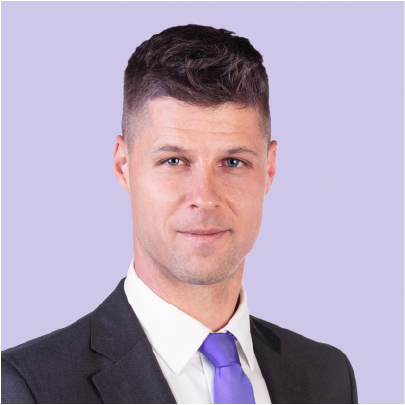Best Occupational Pension Funds in Switzerland in 2025: A Practical Comparison for SMEs and Startups

Choosing the right occupational pension fund is an important strategic decision for companies. Swiss SMEs and startups that make smart choices in occupational pensions can reduce costs, enhance employee benefits, and boost long-term satisfaction. But with over 1,300 pension funds in Switzerland, how can you tell which ones stand out?
This article compares six major collective pension foundations based on publicly available figures and rankings. Our goal is to provide a simplified but informative snapshot of the most relevant metrics for 2025, while keeping in mind that a deeper comparison is complex and depends heavily on individual company needs.
Book a free initial consultation with our experts.
Book a callHighlights
- Swiss SMEs can reduce costs and boost benefits by choosing the right occupational pension fund
- Key metrics include coverage ratio, interest on savings, conversion rates, and admin fees
- Asga and Profond perform strongly in financial stability and returns while keeping admin fees low
- Beyond numbers, plan flexibility and service quality are important criteria when selecting a fund
- The final choice of fund depends on company profile, risk appetite, and employee needs
Content
- Best Occupational Pension Funds in Switzerland in 2025: A Practical Comparison for SMEs and Startups
- Highlights & content
- Understanding occupational pensions and collective foundations
- Brief overview of the funds we compared
- How do the different pension funds compare?
- Key takeaways: which fund succeeds where?
- Final thoughts: What the numbers don’t tell you
- Talk to Nexova for tailored pension advice
- FAQ
Understanding occupational pensions and collective foundations

What is the occupational pension (BVG)?
Occupational pensions (BVG), also known as the second pillar, are a mandatory part of Switzerland’s three-pillar pension system. While the first pillar (AHV/IV/EO) provides basic state coverage, the second pillar is intended to maintain the employee’s accustomed standard of living after retirement.
Employers are required to register their employees with a pension fund once the annual salary exceeds a set threshold (CHF 22,680 in 2025). The employer and employee share contributions, and the funds collected are invested and later used to finance retirement benefits, as well as risks such as disability and death.
What is a collective foundation (Sammelstiftung)?
A collective foundation is a popular pension solution used by many SMEs and associations in Switzerland. Instead of each company operating its own pension fund (which is administratively complex and expensive), they affiliate with a collective foundation that pools contributions from multiple employers under one umbrella.
This allows companies to benefit from shared expertise, lower administrative costs, and diversified investment strategies.
Benefits of collective foundations for SMEs and startups:
- Cost-efficient: Shared infrastructure and administration
- Shared risk and expertise: Professional asset management and risk pooling
- Flexible: Often multiple plans available for companies to choose between
- Compliant: Fully regulated and supervised
Full insurance vs. semi-autonomous solutions
Within the framework of collective occupational pension foundations, there are two primary management models for employers to choose:
- Full insurance: All contributions are channeled into an insurance product with a conservative investment strategy. The insurer guarantees the retirement and risk benefits, and assumes all investment and longevity risks. In exchange, returns are typically lower, and flexibility is limited. These solutions are attractive for very risk-averse employers.
- Semi-autonomous: The collective foundation insures only the risk benefits (death/disability) externally, while the retirement capital is invested and managed by the foundation itself. This setup allows for higher potential returns and more transparency, but also means investment risk remains with the pension plan.
All six of the foundations in our comparison are semi-autonomous collective foundations. This model is the most common among Swiss SMEs today, as it offers a solid balance between performance potential and the enhanced reliability of a pooled pension structure.
Book your free BVG consultation with our experts.
Book a callBrief overview of the funds we compared

Here’s a short introduction to the six foundations included in our comparison:
- Helvetia Sammelstiftung (Helvetia Collective Foundation): Backed by Helvetia Insurance, this foundation offers a solid mix of stability and good interest rates. It’s often chosen by mid-sized companies looking for a dependable second-pillar partner.
- Asga Pensionskasse (collective pension fund): One of the largest independent collective foundations in Switzerland. Asga is popular among SMEs for its stability, high coverage ratio, solid interest on retirement savings, and a competitive fixed admin fee.
- Zurich Vita Sammelstiftung (Zurich Vita Collective Foundation): Part of Zurich Insurance Group, this semi-autonomous foundation is known for its wide reach, plan flexibility, and a high ratio of active insureds to pensioners.
- Profond Vorsorgeeinrichtung (Profond Pension Foundation): A performance-focused fund known for its high long-term interest credited to members and commitment to responsible investing. Profond has won multiple awards for return and service quality.
- AXA Stiftung Berufliche Vorsorge (AXA Foundation for Occupational Benefits): One of the biggest players in the Swiss pension market, offering both full-insurance and semi-autonomous models. AXA’s foundation combines scale with accessible options for SMEs.
- Tellco pkPRO Sammelstiftung (Tellco pkPRO Collective Foundation): A relatively lean, flexible provider with a good active-to-retired ratio and strong conversion rate, often praised for customization and SME-oriented services.
Book a free initial consultation with our experts.
Book a callHow do the different pension funds compare?

We compared the six different pension funds across the following key metrics
- Coverage ratio
- Active-to-pensioner ratio
- Interest credited to retirement savings
- Technical interest rate
- Conversion rate
- Fund size and scale
- Administration fees
Below is an explanation of what each of these metrics are, why they matter when comparing different pension funds, and an analysis of how the 6 funds stacked up across these various indicators.
Important note: Some of the figures shown below (specifically those relating to active-to-pensioner ratios and total balance sheet values) are extrapolated from 2023 data due to limited availability of more current figures, but they give a fair indication of the current state. This is not a comprehensive evaluation. Each pension fund offers different plans, levels of flexibility, and administrative support. For a tailored recommendation, consult a Nexova pension expert.
1. Coverage ratio
What it is:
The coverage ratio shows how well a pension fund’s liabilities (promises to current and future pensioners) are covered by its assets. A coverage ratio above 100% means the fund has more assets than obligations, a sign of strong financial health.
Why it matters:
This is one of the most important indicators of a fund’s stability and ability to cope with financial downturns. A higher ratio reduces the risk of restructuring measures, which might otherwise require higher employer/employee contributions.
Top performers:
Asga leads the field with an impressive 117.4%, offering a significant cushion for future volatility. They are followed by Zurich Vita (111.7%) and Profond (110.1%).
Pension fund coverage ratio
- Asga
- Zurich Vita
- Profond
- AXA Stiftung
- Helvetia
- Tellco pkPRO
- 117.4 %
- 111.7 %
- 110.1 %
- 109.8 %
- 105.9 %
- 103.3 %
2. Active-to-pensioner ratio
What it is:
This ratio compares the number of active insured members (currently working and contributing) to pensioners (receiving payouts). It indicates how “young” and sustainable the fund is.
Why it matters:
A high ratio means there are more contributors than recipients, which is essential for maintaining flexibility and absorbing shocks without raising premiums. Funds with many retirees and fewer actives may face more pressure.
Top performers:
AXA (29.9), Tellco pkPRO (17.9) and Zurich Vita (17.0) stand out with the strongest active bases. While Profond (4.73) and Helvetia (3.52) have more mature insured populations, but this doesn’t automatically signal weakness. In Profond’s case, for example, it reflects the fund’s long-standing reputation and its ability to deliver strong performance even with a more pension-heavy structure.
Active-to-pensioner ratio
- AXA Stiftung
- Tellco pkPRO
- Zurich Vita
- Asga
- Profond
- Helvetia
- 29.89*
- 17.9
- 17.00
- 9.41
- 4.73*
- 3.52
* Due to lack of available 2024 data on number of pensioners for AXA and Profond, the active-to-pensioner ratios listed were extrapolated from 2023 data.
3. Interest credited to retirement savings (3-year average)
What it is:
This figure shows the annual interest credited to the savings of active insured persons, based on the years 2022–2024. It reflects how much return is passed on from the fund’s investments to retirement savings.
Why it matters:
This is often the primary figure that is looked at to determine a pension fund’s overall attractiveness and success, because it directly affects how quickly an employee’s retirement savings grow. A higher rate increases long-term pension capital, making it one of the most important metrics. Over decades, even small differences in interest rates compound into major differences in retirement income.
Top performers:
Profond is far ahead with a 4.4% average over the last three years—more than double the market norm. Asga follows with 2.86%, and then Helvetia at 2.20%, both offering a solid return.
Profond has dominated the industry in terms of return on retirement savings for the last few decades, and 2025 will be the 17th time in a row that they win the award for the highest return over a ten-year period (2015 – 2024). They have maintained a high interest rate of about 4% since 1991.
Interest credited to retirement savings
- Profond
- Asga
- Helvetia
- AXA Stiftung
- Zurich Vita
- Tellco pkPRO
- 4.40%
- 2.86%
- 2.20%
- 1.87%
- 1.85%
- 1.41%
4. Technical interest rate
What it is:
This is the actuarial rate used to calculate pension liabilities. It reflects the assumed future return on assets used in the fund’s long-term financial planning.
Why it matters:
A higher technical interest rate means the fund assumes it can earn more on its investments over time, which reduces the amount of capital it needs to set aside today to meet future obligations. This can artificially inflate the coverage ratio, since the liabilities appear smaller on paper.
While this approach may free up capital in the short term, it increases risk if the actual returns fall short. Conversely, a lower technical rate reflects a more conservative stance and results in higher reserves, offering greater security.
Summary:
While most funds range between 1.75% and 2.00%, AXA Stiftung stands out with a slightly higher technical interest rate of 2.25%, suggesting more optimistic financial planning.
5. Conversion rate
What it is:
This rate determines how much of a retiree’s accumulated capital is converted into an annual pension. For example, a 5.6% rate on an accumulated retirement saving of CHF 100,000 results in CHF 5,600/year annual pension.
Why it matters:
Higher conversion rates mean higher lifetime pensions for the same savings. This is especially important for lower earners who rely more on guaranteed payouts. However, for younger employees, high conversion rates are not necessarily attractive. This is because, to fund these higher payouts, the pension fund may credit less interest to current savers, which can limit long-term capital growth.
Top performers:
Conversion rates are similar among the six pension funds considered, with most funds offering between 5.2% and 5.6%. Tellco pkPRO has a slightly higher conversion rate of 5.8% in 2025, offering strong guaranteed pensions.
6. Fund size and scale
What it is:
This includes both the number of total insured persons and the total assets under management (AUM). It reflects the fund’s scale and reach.
Why it matters:
Larger funds may benefit from economies of scale, broader diversification, and more sophisticated investment strategies. However, scale alone doesn’t guarantee efficiency or high returns, and smaller funds can sometimes be more agile and client-focused.
Top performers:
AXA Stiftung has the largest number of insureds (227,017), followed by Asga (172,014) and Zurich Vita (150,340). In terms of AUM, Asga leads with CHF 29.83 billion, followed by AXA (CHF 28.17 billion) and Zurich Vita (CHF 20.76 billion).
Profond offers strong performance at mid-scale with a high AUM compared to the total number of insureds.
Insured & Assets under management
- AXA Stiftung
- Asga
- Zurich Vita
- Profond
- Helvetia*
- Tellco pkPRO*
- 227’017
- 172’014
- 150’340
- 69’230
- 63’857
- 95’535
- 28.17
- 29.83
- 20.76
- 12.82
- 7.86
- 4.58
* Detailed balance sheet information was only available up to December 2023 for Helvetia and Tellco pkPRO. The rest of the figures pertain to 31 December 2024.
7. Administration fees
What it is:
Administrative fees cover the operational costs of managing a pension plan, including things like recordkeeping, compliance, member communication and digital platforms. These fees are usually charged either as a fixed amount per insured person or as a percentage of salary. For example, a provider might charge CHF 200 per year per employee, or 0.2% of that employee’s salary.
Why it matters:
Admin fees are usually split equally between employer and employee, making them an important consideration for both parties. These costs can add up quickly, especially in larger companies, and have a direct impact on the total cost of pension provision. But comparing them isn’t always straightforward. Some funds report flat fees, while others apply percentage-based pricing.
To make matters more complex, different providers include different things in their calculations: some count only internal admin, while others bundle digital tools, onboarding, or advisory services. This variation makes a meaningful direct comparison difficult.
Top performers (based on CHF 100,000 salary)
- Asga
- Profond
- Tellco pkPRO
- Zurich Vita
- Helvetia
- AXA Stiftung
- Fix
- 0,2 % des Gehalts
- 0,2 % des Gehalts
- Fix
- 0,3 % des Gehalts
- Variabel
- CHF 180
- CHF 200
- CHF 200
- CHF 240
- CHF 300
- CHF 570
If we assume an annual salary of CHF 100,000, Asga provides the most competitive administration fees with their fixed fee of CHF 180 per insured. However, this can be misleading, as flat fees tend to favour higher earners. For example, Asga’s CHF 180 fixed fee equals just 0.18% for an employee earning CHF 100,000, but 0.26% for someone earning CHF 70,000.
By contrast, percentage-based fees scale with income, so at lower salary levels, providers like Profond or Tellco pkPRO may be more competitive.
Company-level admin fees:
In addition to per-employee costs, some funds charge an annual flat fee per employer. These can disproportionately impact small companies with just a handful of staff:
- Asga: CHF 200 per company
- Profond: CHF 600 per company
- Zurich Vita: CHF 1,000 per company
- Others (AXA, Tellco, Helvetia): No per-company fee
For a 5-person team, Zurich Vita’s employer fee alone would equate to an extra CHF 200 per employee, before even factoring in per-person admin charges.
Additional notes on administration fees
- Total expenses: Here we have only compared administration fees, but total costs include both administrative and asset management fees, which vary widely across different providers. Top performers manage to keep total costs to under CHF 500 per insured person annually, while more expensive funds exceed CHF 1,000, with some even charging more than CHF 1,500 per insured. Higher costs are especially common with full-insurance models and smaller foundations that are less able to take advantage of economies scale.
- Bundled services: Some funds offer added value through direct onboarding, client training, custom planning tools, or digital interfaces. These services increase cost but may deliver more value and efficiency to both employers and employees.
- Income bias: As mentioned, administrative costs per insured person can be misleading. Funds that serve higher earners may appear more expensive simply because their average salary base is higher. For example, a CHF 500 fee on a CHF 150,000 salary (0.33%) may seem higher than CHF 300 on CHF 70,000 (0.43%), but it’s not necessarily less efficient.
- Inconsistent presentation: Pension funds report costs in various ways—per insured person, as a percentage of payroll, or relative to assets under management. Some include only internal costs, while others factor in marketing, digital tools, or external advisory fees. This lack of standardization makes an insightful comparison highly impractical.
- Risk premiums also matter: Tellco pkPRO, while maintaining low admin fees, applies a flat 1% premium for the legal minimum risk coverage across all age groups. This makes its risk coverage relatively expensive for younger employees, which is an important detail for startup teams with a youthful workforce.
For these reasons, we advise always evaluating cost relative to the scope of services offered and benefits delivered, not in isolation. Raw cost-per-insured data is highly misleading and needs to be interpreted under the careful guidance of a pension fund expert like Nexova.
Other key indicators and metrics
Beyond the core metrics in the above comparison, there are several other key aspects SMEs should evaluate when comparing different pension funds:
- Return on investments (ROI): Indicates how successfully a fund grows its capital over time. Profond, for instance, has achieved an average ROI of 4.3% over the past 5 years, which is directly translated into their consistently high interest credited to retirement savings.
- Risk premiums: Some funds offer lower premiums for death and disability coverage, which is an important cost driver. These premiums can vary significantly between providers and can therefore have a noticeable impact on total employer contributions, especially for companies with older or higher-risk employee profiles.
- Service quality: The scope and quality of services funds provide can differ widely. Factors such as responsiveness, digital tools, onboarding support, and access to advisory services can strongly influence employer satisfaction and administrative efficiency. Profond received an innovation award in 2024 for its outstanding communication practices.
- Asset allocation: A fund’s mix of equities, real estate, bonds, and alternatives reveals its investment philosophy and risk appetite. Funds with a higher equity allocation may deliver better long-term returns, but can also experience more short-term volatility, which is important when evaluating stability and payout potential.
It is extremely complex to compare pension funds across all these various metrics, and expert insight is needed to interpret them in context. That’s why a fiduciary partner like Nexova can add significant value in helping you come to grips with these more nuanced aspects of the occupational pension fund landscape in Switzerland.
Book your free BVG consultation with our experts.
Book a callKey takeaways: which fund succeeds where?

Here is a summary of the key strengths and features of each of the six occupational pension funds discerned through the above comparative analysis:
- Asga: High coverage ratio, solid credited interest, competitive fixed admin fee, large and stable
- Zurich Vita: High active ratio, good liability coverage, large fund with established name, fixed fee model that scales well for higher earners but high flat fee per company
- Profond: Exceptional interest credited, high average ROI, transparent cost structure, recognized for innovation and sustainability
- AXA: Highest total number insured (large scale), excellent active ratio, confident valuation assumptions (highest technical interest rate), but relatively high admin fees
- Tellco pkPRO: Highest conversion rate, strong active ratio, known for high-quality and customizable service for SMEs, competitive cost level but applies a flat 1% risk premium across all age groups
- Helvetia: Competitive interest and conversion rate for its size, moderate admin fees, but less active contributor depth
Book a free initial consultation with our experts.
Book a callFinal thoughts: What the numbers don’t tell you

While these figures give a useful overview, selecting the right pension fund for your company is about more than the numbers alone. Here’s what the metrics won’t tell you:
- Plan flexibility: Does the fund offer tailored benefit structures and multiple plans to best suit your workforce?
- Administration and digital tools: Is onboarding smooth and fully digital? Are dashboards, payroll syncing, and reporting user-friendly?
- Transparency: How well does the fund communicate with employers and employees?
- Investment approach: How aggressively does the fund invest its assets, and does this align with your company’s risk appetite? Does the fund pursue ESG-aligned investments?
- Company-specific needs: Salary structures, workforce age, and benefit expectations all influence the ideal choice. How does the fund align with your company’s unique needs and preferences?
This is why working with a trusted fiduciary partner like Nexova can make all the difference. Our experts help SMEs evaluate pension providers holistically, basing our analysis on much more than rudimentary performance figures alone, but on overall structure, service, and strategic alignment with your company’s goals.
Book your free BVG consultation with our experts.
Book a callTalk to Nexova for tailored pension advice

Choosing an occupational pension fund is a crucial financial decision for your company and your workforce. The right choice can reduce long-term costs, improve employee satisfaction, and secure your company’s retirement benefits strategy. But with so many providers, plans, and performance figures to consider, the decision is anything but straightforward.
At Nexova, we specialize in helping Swiss SMEs and startups navigate this complexity with clarity. We offer objective, data-backed comparisons and draw on our extensive experience to recommend solutions that match your company’s size, structure, and goals.
Contact us today for hands-on support in choosing the right occupational scheme for your company or switching to a better-fit foundation. We’ll help you make a confident, informed decision that supports both your business and your team.
FAQ
Answers at a click
What’s a good conversion rate in 2025?
Generally, anything over 5.5% is strong, with rates above 6% considered to be exceptional. Rates around 5.2% are increasingly common but yield smaller monthly pensions, and below 5% is considered quite weak.
Why does the interest on retirement savings matter so much?
It directly impacts how much your employees accumulate over time. A 1% difference over 20 years can mean thousands of francs due to the compounding effects of interest.
Is it difficult to change pension funds?
No, changing your occupational pension fund provider is generally quite straightforward, but it does still require planning. Employee consultation and careful contract review are essential. Nexova supports you every step of the way through the transition.
Should every company review their occupational pension fund and compare potential providers?
Absolutely. Even a small percentage gain in returns or drop in admin fees can create huge savings over time, and greatly enhance your employees’ retirement benefits and overall satisfaction. Let Nexova benchmark your current setup and suggest suitable alternatives if needed.
Is Profond always the best choice considering their high return and service quality?
Not necessarily. There is no denying that Profond is one of the standout choices of collective occupational pension foundations for SMEs in Switzerland. It’s especially great for those seeking high pension returns, enhanced flexibility, and stellar service and communication, but others may prioritize cost, stability, or active insured ratios.
Are higher conversion rates always better?
Not always. While higher conversion rates mean more pension income for today’s retirees, they can also lead to increased cross-subsidisation — where investment returns from younger, active insureds are used to finance generous pension payouts. This can result in lower interest being credited to retirement savings.
A fund maintaining a high conversion rate might also face long-term financial strain, increasing the risk of restructuring or benefit cuts down the line. If you’re early in your career, it may be more beneficial to choose a fund that prioritizes long-term returns and capital growth over immediate pension guarantees.

